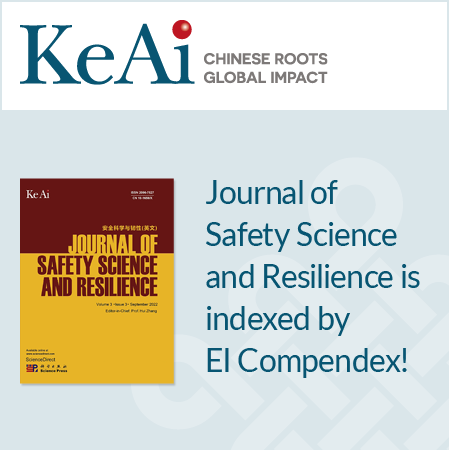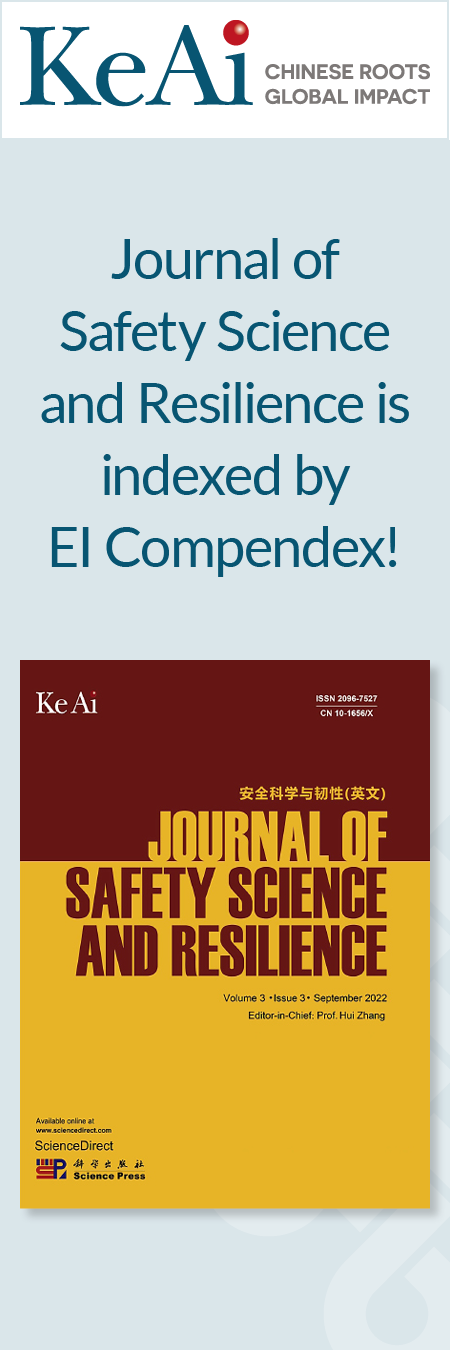Predicting models for critical velocity at the stair entrance under a two-story building fire
June 2026
The cross-floor spread of fire smoke in a two-story building hinders personal evacuation and leads to casualties. To address this issue, sufficient wind pressure needs to be applied at the stair to...
Influencing factors and mechanisms of super high-rise buildings safety risks: A Fuzzy-DEMATEL-AISM analysis
June 2026
•Developed multi-dimension theoretical framework for super high-rise building risks.•Identified key influencing factors/pathways for super high-rise building structural risks.•Introduced multi-factor,...
Machine learning hybrid dynamic best model selection algorithm for real-time fire prediction using IoT-enabled multi-sensor data in buildings
June 2026
Fire disasters in urban areas, including homes, offices, and industrial facilities, have increased significantly over the past decade, causing extensive damage and loss of life. Integrating intelligent...
Human detection with smoke occlusion based on AI-generated images
June 2026
Detecting occupants trapped in buildings is challenging during fire accidents because of the dense, rapidly spreading smoke. To this end, this paper proposes a human detection method that accounts for...
Awareness analysis via Weibo social media data of major fire disasters
June 2026
Fire, a globally significant hazard, has a detrimental impact on lives, property, and socio-economic development. Public attention to fires is crucial for building fire safety under the current disaster-driven...
SIL assessment of safety instrumented systems in oil and gas stations based on STPA-Bow-tie
June 2026
•The STPA hazard analysis focuses on overall system structure and functional interactions.•The Bow-tie model can achieve protection layers analysis in multi-cause/consequence scenarios.•A novel rule...
Exploring cascading failures in supply chain risk management: A systematic review, 2013-2024
June 2026
Supply chain risk management has become increasingly crucial due to the complexity and interconnectivity of modern supply chains. Among various risk factors, cascading failures have emerged as a significant...
A lightweight four-channel multi-modal model to improve computational performance of automated fire detection
June 2026
The urgent need for advanced fire detection methods stems from the increased intensity of fire incidents, which cause massive property loss and irreversible damage. To overcome the limitations of traditional...
Intelligent fire modeling in wildland-urban interface: A comprehensive review of current progress, challenges, and future perspectives
June 2026
Wildfire prevention and control, especially within complex Wildland-Urban Interface (WUI), face escalating challenges due to the synergistic impacts of climate change and expanding urban frontiers....
Study on combustion characteristics of cables with spacing arrangement under different external radiation conditions
June 2026
A series of experiments was conducted to explore the influence of cable spacing on combustion characteristics in real cable installation, considering various external radiation intensities (30, 50 kW/m2)...
The impact of inaccurate supply-demand types for emergency supplies on the psychological pain of victims: Data from flood disasters in China
June 2026
After a disaster, due to transportation constraints, transportation priority setting, emergency resource shortage and imprecise assessment of emergency resources, it is easy to cause an inaccurate match...
Optimizing urban infrastructure resilience: Analyzing cascading failures and critical node dependencies through multilayer network models
March 2026
As urbanization and industrialization progress, urban infrastructure systems grow increasingly complex, heightening their vulnerability to cascading failures from natural disasters and human-induced...
Assessing resilience potentials in management of occupational safety and health in hospitals: Development and validation of a tool
March 2026
•A tool based on the Resilience Assessment Grid (RAG) was designed and validated.•A pilot test was conducted with 404 healthcare professionals across three public hospitals.•The tailored RAG proved...
CO-Mode with AV-CRM: A novel paradigm towards human–machine collaboration in intelligent vehicle safety
March 2026
With the continuous advancement in vehicle intelligence, enhancing safety has emerged as a key priority in intelligent vehicle research and development. Intelligent vehicles are currently limited in...
Evolution of human factors research in aviation safety: A systematic review and bibliometric analysis of the intellectual structure
March 2026
Despite the multitude of research endeavors dedicated to Human Factors (HF) in aviation safety, a comprehensive review remains conspicuously scarce. Accordingly, this study presents the first in-depth...
High-performance fire detection framework based on feature enhancement and multimodal fusion
March 2026
Fire detection technology has become increasingly critical in the context of rising global fire threats and extreme weather conditions. Traditional methods rely on single-modal sensors and conventional...
Machine learning for occupational accident analysis: Applications, challenges, and future directions
March 2026
Machine learning (ML) drives progress in occupational accident prevention across diverse sectors. However, significant challenges persist in aligning these tools with practical safety needs, including...
Guidance for estimating the blast load from vapour cloud explosions in traffic environments using the multi-energy method
March 2026
The accidental release of a flammable gas on a road can result in a vapour cloud explosion (VCE). Such VCEs generate a blast wave that propagates away from the explosion, potentially damaging nearby...
Knowledge and practice of earthquake management among apartment dwellers: A case study of Jakarta City, Indonesia
March 2026
Urban city apartments and flat dwellers face increasing threats from earthquakes, and the current understanding and implementation of earthquake risk reduction techniques in high-rise housing communities...
National resilience: Development and validation of a new four-dimensional model for disaster preparedness assessment
March 2026
The studies described here aim to develop and empirically validate a more accurate and reliable model for assessing national resilience, emphasizing its importance for disaster risk reduction and disaster...
A position-aware attention model based on double-level contrastive learning for hyper-relational knowledge graph representation in emergency management
March 2026
Effective emergency management relies on timely risk identification and decision-making, wherein natural language processing plays a vital role. Hyper-relational knowledge graph (HKG) representation,...
Improving fire resistance of data monitoring equipment in wildland and wildland-urban interface fires
March 2026
The 2019–2020 Black Summer fire season highlighted the vulnerability of water monitoring sites, causing damage, data loss, and negatively affecting water management during massive wildfires. It becomes...
Advancing hazardous materials transport safety: Systematic insights on risks, challenges, and research gaps
March 2026
•Comprehensive review of 1779 publications on Hazmat transportation safety.•Identifies critical gaps in resilience engineering, human factors, and security.•Advances understanding of dynamic risks and...
A fuzzy multi-criteria decision framework for community isolation center site selection to enhance public health resilience
March 2026
•Proposes a fuzzy MCDM framework for selecting isolation centers during outbreaks.•Integrates FAHP and FTOPSIS using trapezoidal fuzzy numbers to model uncertainty.•Applies the model to a real-world...
Skeleton-based detection of anomalous personal protective equipment doffing behaviors among healthcare workers
March 2026
Identification of doffing behaviors of personal protective equipment (PPE) plays a crucial role in ensuring the safety of healthcare workers. With the continuous emergence of new infectious diseases,...


